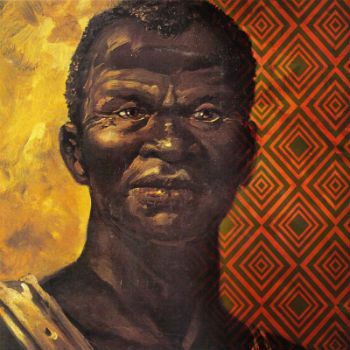Generally when we hear about mummies, we almost always refer to the cases of the Egyptian sovereigns or the mummified bodies in pre-Columbian America. However, there are a huge number of mummies that have been discovered in swamps in northwestern Europe and also in the region of Great Britain.
At swamp mummies, unlike the Egyptian and American mummification processes, were preserved due to the conditions of the places where their bodies were left. In the swamps of these regions there is the formation of peat - material of vegetal origin formed from the decomposition of mosses and other materials - which is used as fuel for heating or cooking foods.
The composition of the peat and the decomposition of the materials make the marsh waters extremely acidic, anaerobic, assisting in the conservation of tissues and other parts of the bodies of people who were left there, in addition to blackening the skin. However, the acidity demineralizes the bones. If on the one hand it conserves the bodies, helping the work of archaeologists, on the other this process prevents further research, mainly due to the difficulty of being able to perform DNA tests on these mummies. In addition, the contact after the removal of the found location caused the bodies in contact with the aerobic environment to decompose quickly.
Most of the bodies date from the so-called Iron Age, which occurred between the 3rd century BC. Ç. and the first century d. Ç. The conditions in which they were killed present a series of doubts about the real reasons that led to these people to die, as in the case of the so-called Tollund Man, found in a Danish swamp in the 1930. The signs on his body indicate that the death was due to hanging. Tollund Man is one of the most preserved European mummies, with a body found almost intact. But due to the decomposition caused by contact with the aerobic environment, researchers became interested in preserving only the head and arms.
Do not stop now... There's more after the advertising ;)
Several theories are raised about the reasons for the deaths. The most accepted refer to pagan rituals performed by Germanic peoples in honor of their gods. But the research on manuscripts of the period, which were written mainly by the Romans who wrote from reports of merchants, points out that the reasons for the deaths were to punish those people who had habits considered unacceptable. However, possibly these Roman interpretations were more aimed at questioning and moralizing the Romans themselves than to faithfully portray the situation of these deaths.
In addition to Tollund Man, Oldcroghan Man, Grauballe, Barremose, Raevemosen, and the wives of Elling, Haraldskdr, and Yde were also found. Thousands of bodies were recorded in these European regions, showing that the practice of sacrifices was to some extent taken for granted among the Germanic peoples of the period. These bodies are a source of study and knowledge about this moment in European history.
By Tales Pinto
Graduated in History
Would you like to reference this text in a school or academic work? Look:
PINTO, Tales of the Saints. "Mysteries of the Swamp Mummies"; Brazil School. Available in: https://brasilescola.uol.com.br/historia/mumias-pantano.htm. Accessed on June 27, 2021.


